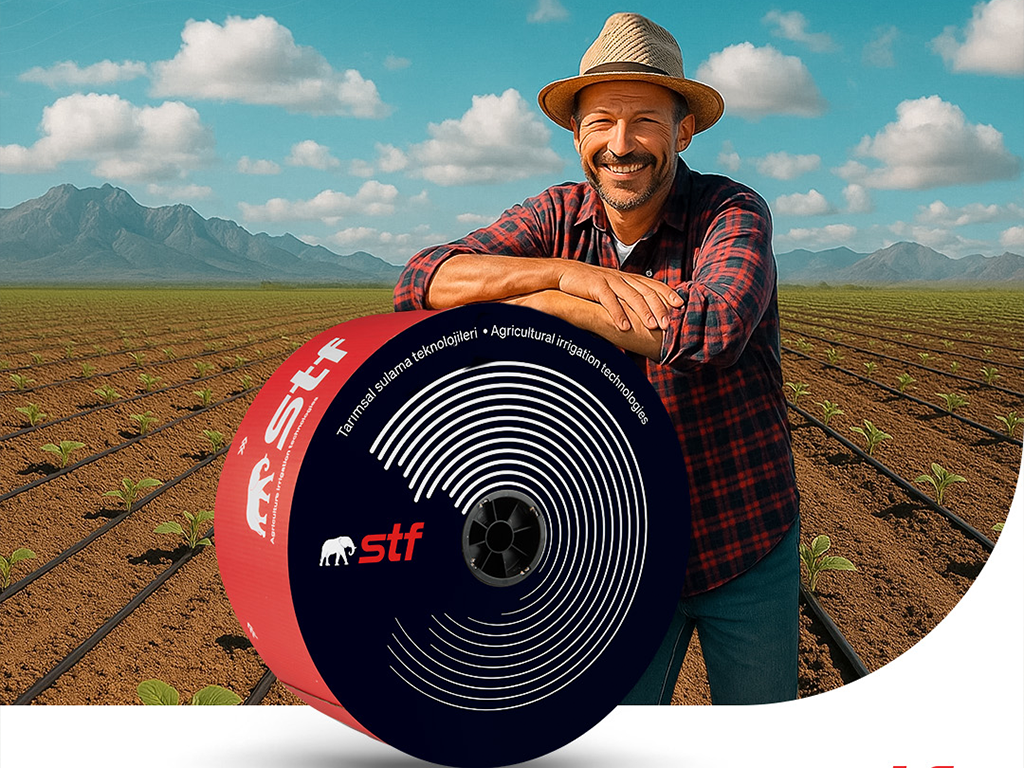
Irrigation Systems
In modern agriculture, sustainability, efficiency, and resource management are essential. One of the most critical components in achieving these goals is the choice of irrigation systems. The right irrigation system ensures optimal plant growth while minimizing water and energy consumption.
In this article, we’ll explore the types of irrigation systems, their advantages, how to choose the right one, and how STF provides high-quality irrigation solutions tailored for modern farming.
Why Are Irrigation Systems Important?
Countries like Turkey, where agricultural production plays a central role in the economy, must manage water resources efficiently. Inefficient irrigation leads not only to water waste but also to soil degradation, lower yields, and higher costs.
With a well-designed irrigation system, you can:
- Reduce water consumption by up to 40%
- Improve crop quality and yield
- Prevent soil erosion and salinization
- Minimize labor and energy costs
Most Common Irrigation Systems
1. Sprink (Sprinkler) Irrigation
Sprink irrigation distributes water through pressurized sprinkler heads that simulate rainfall. It is one of the most commonly used irrigation systems worldwide.
Advantages:
- Uniform watering across large areas
- Suitable for a variety of crops
- Can be automated with timers and sensors
STF’s products such as S17 Sprink and S10-K Sprink are engineered for high efficiency, durability, and ease of installation in a variety of terrains.
2. Drip Irrigation
Drip irrigation delivers water directly to the root zone through a system of tubes and emitters, reducing evaporation and water waste.
Advantages:
- Maximum water savings
- Reduces weed growth
- Ideal for row crops, greenhouses, and orchards
STF offers a complete range of drip irrigation pipes, drippers, and fittings for efficient water delivery in any agricultural setting.
3. Surface Irrigation
One of the oldest techniques, surface irrigation uses gravity to distribute water across a field through furrows or channels. While inexpensive, it lacks precision and often leads to significant water loss.
4. Subsurface Irrigation
An advanced form of drip irrigation where the system is installed below the soil surface. It delivers water directly to the root zone but requires higher upfront investment.
The Role of Filters in Irrigation Systems
Filters are critical to maintaining the performance and longevity of any irrigation system. Without proper filtration, dirt and particles can clog sprink or drip components, reducing effectiveness.
STF’s plastic filters — including disc, screen, and automatic models — are specially designed to keep your irrigation system clean and functional.
Benefits of using filters:
- Prevents clogging
- Improves water pressure consistency
- Reduces system maintenance and downtime
The Importance of Fittings and Accessories
No irrigation system is complete without durable fittings and accessories. These include elbows, T-joints, valves, connectors, and end caps, all of which ensure a tight and leak-free system.
STF manufactures its own range of high-quality accessories made from UV-resistant plastic materials, offering easy installation and compatibility with both sprink and drip systems.
STF’s Complete Irrigation Solutions
With over 20 years of experience, STF is one of Turkey’s leading producers of agricultural irrigation equipment. Their extensive catalog includes:
- Sprink models
- Drip irrigation pipes and lines
- Plastic filters
- Accessories and fittings
- Pressure regulators
- Custom connection parts
All STF products are designed to withstand harsh outdoor conditions, maintain performance under pressure, and deliver long-term value.
How to Choose the Right Irrigation System
Each field has its unique requirements. Choosing the right system depends on:
- Land size and shape
- Crop type
- Water availability and pressure
- Climate and evaporation rates
- Budget and maintenance capacity
For example:
- For broad-acre crops, sprink irrigation is ideal.
- For greenhouses or row crops, drip systems are more suitable.
- For mixed-use farms, hybrid systems combining sprink and drip are increasingly common.
Conclusion: Efficient Irrigation Starts with the Right System
Modern irrigation systems are more than just equipment — they are investments in sustainability and productivity. By choosing STF’s advanced irrigation products, farmers and agricultural businesses can maximize yield, reduce waste, and contribute to smarter water management.
Whether you’re building a new system or upgrading an existing one, STF offers reliable solutions backed by decades of industry expertise.

